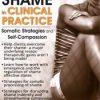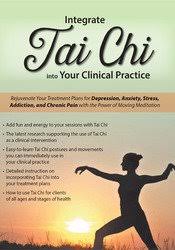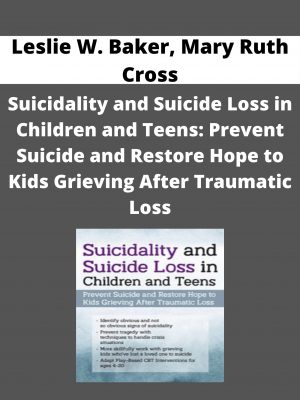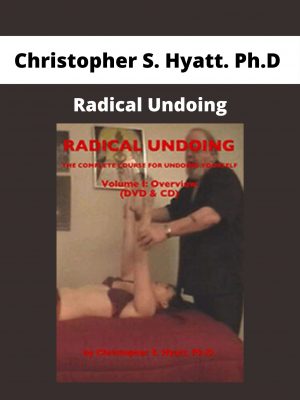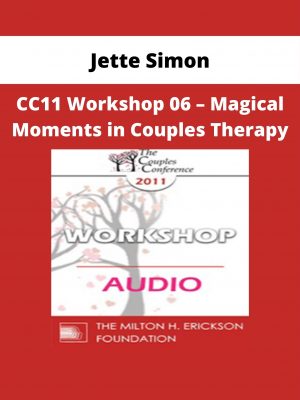Elizabeth Nyang – Integrate Tai Chi into Your Clinical Practice, Rejuvenate Your Treatment
$200 Original price was: $200.$75Current price is: $75.
Shopping Instructions:
- DISCOUNT 15% : SHOP15
- Product Delivery: Within 1 – 12 hours after purchase.
Discover how you can use Tai Chi to add fun and energy to your sessions, engage your clients, and focus them on the path to healing and change.
Elizabeth Nyang – Integrate Tai Chi into Your Clinical Practice, Rejuvenate Your Treatment
Are you looking for something to bring fun and energy to your sessions? Something more than “therapy as usual” that will have your clients eager to engage in the therapeutic process?
Tai Chi does much more than create a relaxed state of body and mind – a growing body of research supports that its combination of gentle and adaptable exercise, breath awareness, and focus offers a host of benefits for improved mental and physical health. Tai Chi can help reduce stress and anxiety, alleviate depression, curb our cravings, and alter our perception of pain. But you’re hesitant to jump in, concerned that incorporating Tai Chi into your clinical practice will be too time intensive, too complicated to learn, and too difficult to introduce to your clients.
Stop worrying and start moving! In this unique and experiential recording, you’ll quickly learn the basic skills of Tai Chi and discover how to incorporate it into your treatment plans for depression, anxiety, stress, addictive cravings, and chronic pain. And you won’t be spending your day in a chair! This recording will get you up and moving while you learn.
No previous knowledge or background in Tai Chi is required to take full advantage of this recording. You will receive detailed instruction on the practice of specific Tai Chi postures and movements, as well as strategies to introduce them to your clients so they can get started right away. Your instructor will connect the dots between the practices of Tai Chi, meditation, and Cognitive Behavioral Therapy and demonstrate the techniques most appropriate for the disorders you see in clients each day. Discover how you can use Tai Chi to add fun and energy to your sessions, engage your clients, and focus them on the path to healing and change.
Key benefits of watching:
- Step-by-step instruction on the basic postures and movements of Tai Chi
- 4 easy ways to use Tai Chi to relieve symptoms of depression.
- Powerful techniques to anchor attention and reduce stress with meditative movement.
- Effective methods to combine Tai Chi with CBT to disengage clients from the automatic thoughts and triggers that fuel their addictions.
- Guided exercises that are adaptable for clients of all ages and stages of health.
Featuring demonstrations and guided experiential exercises, this seminar will have you feeling confident and prepared to bring Tai Chi into your clinical practice. Better still, you’ll be wholly engaged in what you learn during the recording and finish feeling more relaxed, more attentive, and more energetic!
- Analyze research on Tai Chi’s impact on depression and anxiety and articulate what this means for its use in clinical practice.
- Model the postures and movements of Tai Chi to guide clients in a moving meditation practice.
- Establish the role of the Vagus nerve in reducing anxiety and communicate how Tai Chi can be used in-session to stimulate it.
- Incorporate Tai Chi movements with meditation techniques to anchor the attention of stressed clients.
- Articulate how Tai Chi can be individualized for physically limited clients and communicate how these modifications can promote more effective participation in therapy.
- Characterize how clinical tools that increase self-awareness can be used in therapy to help clients better manage their thoughts, emotions, and behaviors.
Would you like to receive Elizabeth Nyang – Integrate Tai Chi into Your Clinical Practice, Rejuvenate Your Treatment ?
The Latest Research on Tai Chi as a Clinical Intervention
- Benefits and limitations
- Physical, emotional, mental
- The role of the Vagus nerve
- Interdisciplinary research from the fields of psychology and sociology
Make Tai Chi Postures Easy and Natural for Your Clients
- The 13 basic postures of Tai Chi
- Yang Style – learn the moves
- Regulated breathing
- ”Push Hands” and partner based exercises
- Step-by-step instruction
Incorporate Tai Chi into Your Treatment Plans for Depression and Anxiety
- 4 ways to use Tai Chi to relieve symptoms of depression
- Nonjudgmental observation of internal thoughts
- Process intervention with the client
- Demonstration and experiential exercise
Help Stressed Clients Cope with Meditative Movement
- Anchor attention
- Experience events without focusing on the extreme
- Focus on the breath to reduce stress
- Intervention demonstration and experiential exercise
Addiction: Adapt Tai Chi to Help Control Addictive Cravings
- Identify addictive cravings
- Disengage from automatic thoughts and triggers
- Adapt Tai Chi to specific client symptoms
- Demonstration of intervention
- Experiential exercise
Tai Chi for Chronic Pain
- The latest research
- Adaptive exercise for special populations
- Step by step instruction on Tai Chi Exercises for chronic pain
- Salutation
- Repulse the monkey
- Move hands like clouds
- White eagle spreads its wings
Related products
HEALTH & MEDICAL
Regina Meredith – Conscious Media Network with Regina Meredith – Eric Pearl on The Reconnection
HEALTH & MEDICAL
Dr Heidi M Crocker – Yoga Alignment | Speaker: Heidi Crocker EdD, DC
HEALTH & MEDICAL
Gaia—Creating-High-Voltage-Health-with-Glenn-Streeter-Open-Minds
HEALTH & MEDICAL
HEALTH & MEDICAL
Dr. J.E. Williams & Kevin Gianni – How to Read Your Blood Tests
HEALTH & MEDICAL
HEALTH & MEDICAL
CC11 Workshop 06 – Magical Moments in Couples Therapy – Jette Simon

